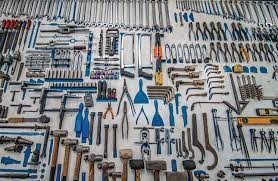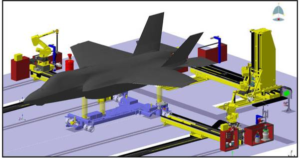
(Preview of a detailed article on the subject)
“Technology can assist, but not replace, human thoroughness in controlling tools related foreign object damage hazard”
Tool management is a critical aspect of aviation maintenance to ensure the safety, efficiency, and regulatory compliance of aircraft operations. Proper tool management practices contribute to overall flight safety.
It is very important for all maintenance personnel to understand that tool control is one of the most important tasks involved in maintaining aircraft. Some key aspects of tool management for aviation maintenance are as follows.
Tool Inventory and Control
A comprehensive inventory of all tools must be applied and used in aviation maintenance. Implement a system for tracking tool usage, location, and calibration status. Barcode or RFID-based systems can help efficiently manage tool inventory.
Tool Calibration
Regularly calibrate all precision tools and equipment according to manufacturer recommendations and regulatory requirements. Establish a calibration schedule and ensure that tools are calibrated by certified calibration facilities. Keep detailed records of calibration dates and results.
Tool Inspection and Maintenance
Conduct regular inspections of all tools to ensure they are in good working condition. Damaged or malfunctioning tools should be repaired or replaced promptly and not used in maintenance. Implement a maintenance program to keep the tools in optimal condition.
Tool Storage and Organisation
Store tools in designated and secure areas to prevent loss, damage, or misplacement. Organize the tool storage system logically, making it easy for technicians to locate the required tools quickly.
Tool FOD (Foreign Object Debris) Control
Implement strict FOD control measures to prevent tools and other foreign objects from being left inside aircraft or maintenance areas. FOD can pose serious safety risks to aircraft operations.
Tool Control Methods
Shadow boards – these display the outline of any missing tools.
Shadow boxes – these use foam cut-outs to hold tools securely and also display the outline of missing tools.
Tool folders/pockets – these have a pocket for each tool and so indicate missing tools.
Tool Tags – this involves tokens being issued with the tools but kept in the tool store or crib under the borrower’s name. Tools are exchanged for tokens on return and all tokens must be cleared at the end of the job or day.
Barcoding – where a tool is checked out to a known person using the same technology used at the point of sale in supermarkets. Personal barcodes can also be used to control access to toolboxes and cribs.
Radiofrequency Identification (RFID) – involves tools being tagged with RFID chips. These are used to simplify check-out and return of tools.
Colour Coding – may be used in conjunction with any of these systems to allow tools to be more easily seen and removed from a job and to identify if tools are missing from their storage.
Continuous Improvement
Regularly review and assess the effectiveness of your tool management processes. Identify areas for improvement and implement necessary changes to enhance tool management practices continually.
A solid tool management system is absolutely crucial for keeping aircraft safe and reliable. These systems along with best practices minimise the risk of errors, improve efficiency, and maintain safety standards.
Suggestions and value additions are most welcome
For regular updates, please register here
References and credits
To all the online sites and channels.
- https://www.flightsafetyaustralia.com/2022/02/back-in-the-box-the-importance-of-tool-control-for-safety/
- https://www.linkedin.com/pulse/role-tool-management-ensuring-safe-maintenance-aviation-andy-graham/
- https://www.flightsafetyaustralia.com/2022/02/back-in-the-box-the-importance-of-tool-control-for-safety/
Disclaimer:
Information and data included in the blog are for educational & non-commercial purposes only and have been carefully adapted, excerpted, or edited from sources deemed reliable and accurate. All copyrighted material belongs to respective owners and is provided only for purposes of wider dissemination.


